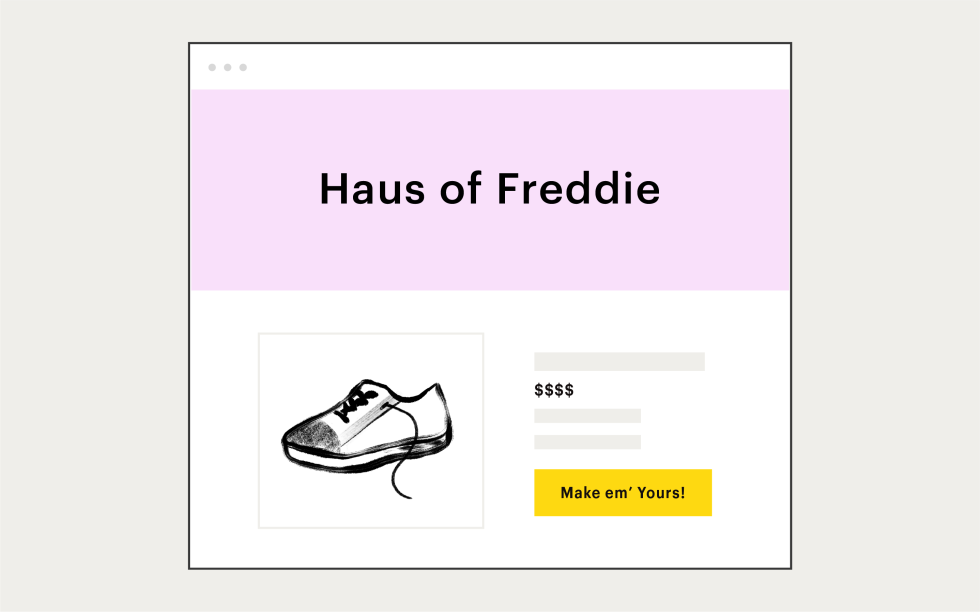Landing pages, especially those designed to help you sell more stuff, give you a great opportunity to highlight a specific item and tell your customers why they’ve gotta have it. Include descriptive product information, and don’t forget to expand on important product specs, like sizing or dimensions. Tell your customers what makes your products—and your business—unique, include social proof. Remember: storytelling often leads to conversion.
Write a compelling product description
One of the most important elements of any product page is a well-written product description that clearly states what you’re selling and why a shopper’s just gotta have it. As with all of your marketing, the copy on your product page should be on-brand and relevant to your audience to be able to convert visitors into customers, but there are a few other things to keep in mind as you write a description of your product.
Be direct
Research has shown that 79% of people tend to scan a webpage instead of fully reading it, so the first description that customers see on your product page should be clear and to the point.
Answer questions that shoppers might have about your product
Before making a purchase, shoppers will want to be sure they know exactly what it is they’re buying. While you probably won’t be able to anticipate every possible question that could arise, you will want to make sure that customers have enough information to buy with confidence.
If you’re selling a piece of clothing, for example, tell shoppers what type of fabric it is and how they can expect the item to fit.
Bring your product to life with images
Customers aren’t able to physically interact with products while they’re shopping online, which means they rely on your product photos to help convince them to buy. In fact, 92% of consumers say that visuals are the top influential factor affecting a purchase decision, so make sure that the imagery on your page conveys texture, size, scent, or any other aspects of your product that might be of interest to your customers.
Multiple images are better than just one
In their 2018 consumer research report, Salsify found that 73% of people want to see 3 or more images when considering a purchase. Fortunately, most mobile devices come equipped with great cameras (and built-in editing tools, too), so even if you’re not a photography pro, it’s easy to take as many beautiful, high-quality and engaging visuals for your online store as you need.
Show different angles
Help your customers visualize what the item looks like in person by using images from different perspectives or proximities.
As you plan your photos, be sure to include at least one “in scale” image, too; 42% of people will try to determine the size and scale from the images on a product page.
But make sure to not compromise your business website’s loading time.
Use lifestyle images
Lifestyle images are a great way to tell the story of your product—and to help your customers imagine how they might use it in their everyday lives.
Incorporate locations, props, and people that will give your audience more context about the thing you’re selling.
Need a few more tips and design inspiration ideas about lifestyle photography? Check out these helpful resources from Shopify, Jungle Scout, and Threadless.






